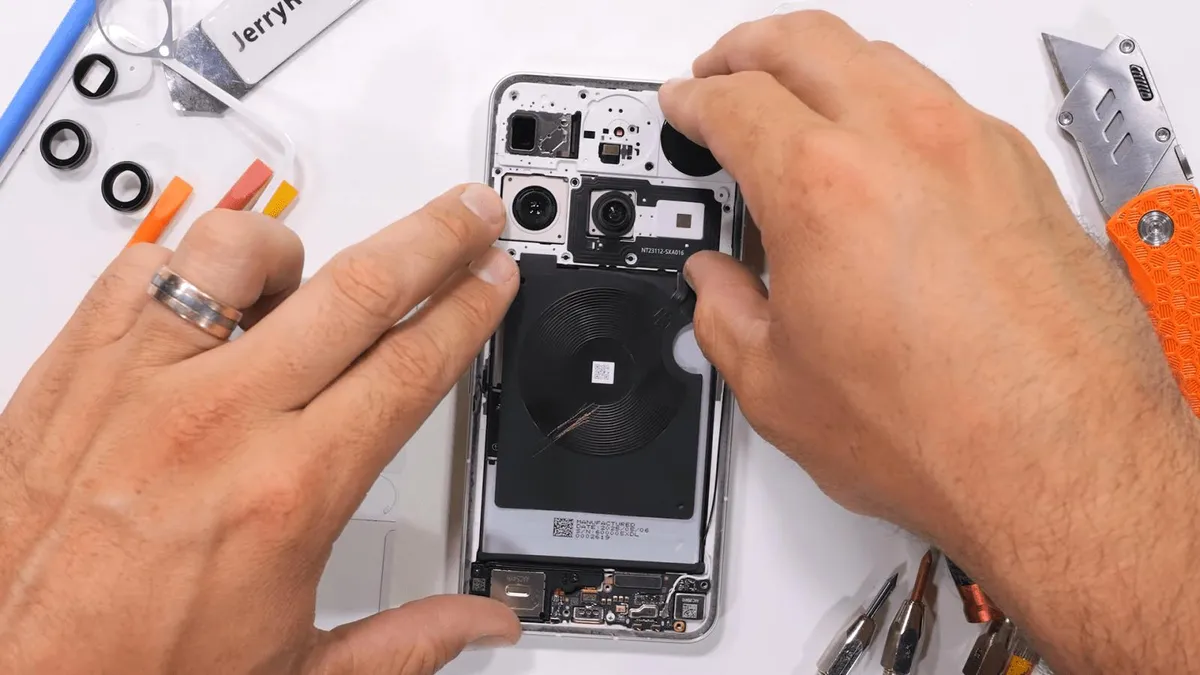
The Nothing Phone (3), despite its controversial design choices, stands out as a robust piece of technology. In a recent teardown conducted by JerryRigEverything, we gained valuable insights into the durability of Nothing's first-ever flagship smartphone. The findings indicate that this device is surprisingly resilient, making it a noteworthy contender in the smartphone market.
The initial segments of the teardown video reveal the performance of the Nothing Phone (3) under various stress tests. The device features a front panel made of Gorilla Glass 7i, which exhibits typical scratch resistance, showing scratches at the Mohs level of six and deeper grooves at level seven. The aluminum frame, however, does show signs of wear when subjected to a standard razor blade, with noticeable scratches and chips.
On a positive note, both the camera glass and the surrounding rings demonstrate impressive resilience against external damage. During the burn test, the display does show its usual markings, but these fade once the display cools down. Perhaps the most anticipated segment of the teardown is the bend test. Viewers are often curious to see how well the device can withstand pressure. Despite the somewhat concerning placement of the antenna lines along the frame, the Nothing Phone (3) holds up remarkably well, showing no signs of bending or flexing under direct pressure.
The latter half of the teardown focuses on the internal components of the Nothing Phone (3). JerryRigEverything showcases the removal of the back panel, which requires a full razor blade to cut through its adhesive. One interesting aspect is that the rear camera bumps are integrated into the rear glass, detaching from the rest of the phone. This design also applies to the capacitive button cover of the Glyph Matrix.
While the back panel gives the appearance of an open view into the phone's internals, it's worth noting that Nothing includes a protective shield over the actual internal components, ensuring their safety. This design choice may have contributed to the mixed opinions surrounding the overall aesthetic of the Nothing Phone (3), but functionality seems to be prioritized.
One of the standout features highlighted in this teardown is the Glyph Matrix. This unique coin-shaped display consists of 489 pixels and is complemented by a capacitive button that allows users to cycle through various display options. Interestingly, the wireless charger is designed with a cutout from its typical circular coils to accommodate the Glyph Matrix, creating a thoughtful blend of form and function.
The teardown reveals that the Nothing Phone (3) is deemed repairable enough to earn a C rating from the EU, as indicated at the beginning of the video. This rating reflects the device's overall accessibility for repairs, making it a practical choice for users concerned about longevity. To top it off, the video concludes on a positive note, showcasing the disassembled Nothing Phone (3) successfully powering back on after reassembly.
In addition to the durability insights, Nothing has announced a new software update for its latest hardware. The latest iteration, Nothing OS V3.5-250711-2047, introduces a range of changes, enhancements, and bug fixes. Key improvements include upgrades to the entire Glyph UI, enhancements to the Essential Space feature for actions like Flip to Record, and optimized charging speeds.
In conclusion, the Nothing Phone (3) emerges from its teardown as a durable and innovative smartphone. With its unique design elements and commitment to user experience through software updates, it certainly makes a compelling case for consumers in search of a reliable flagship device.